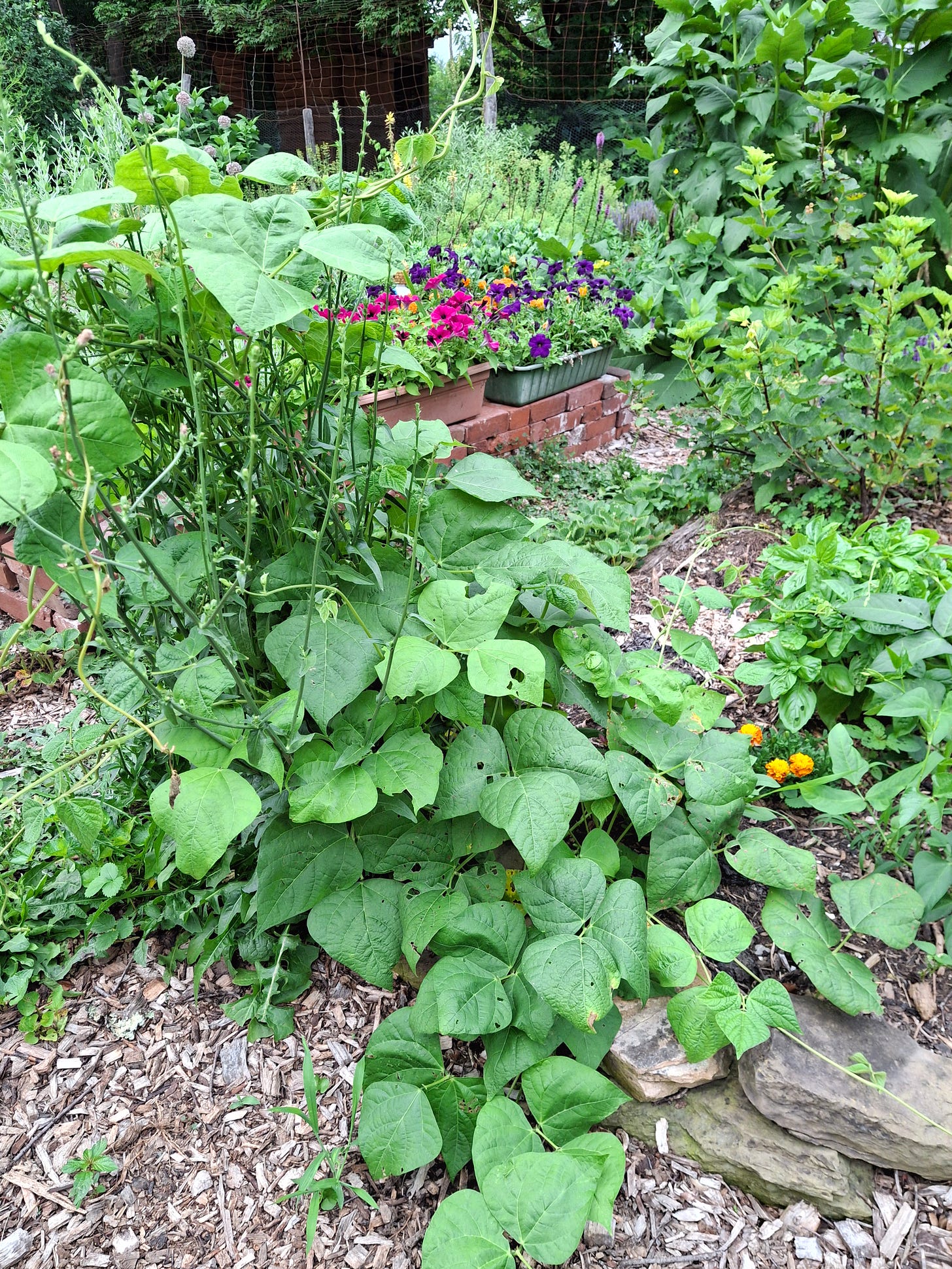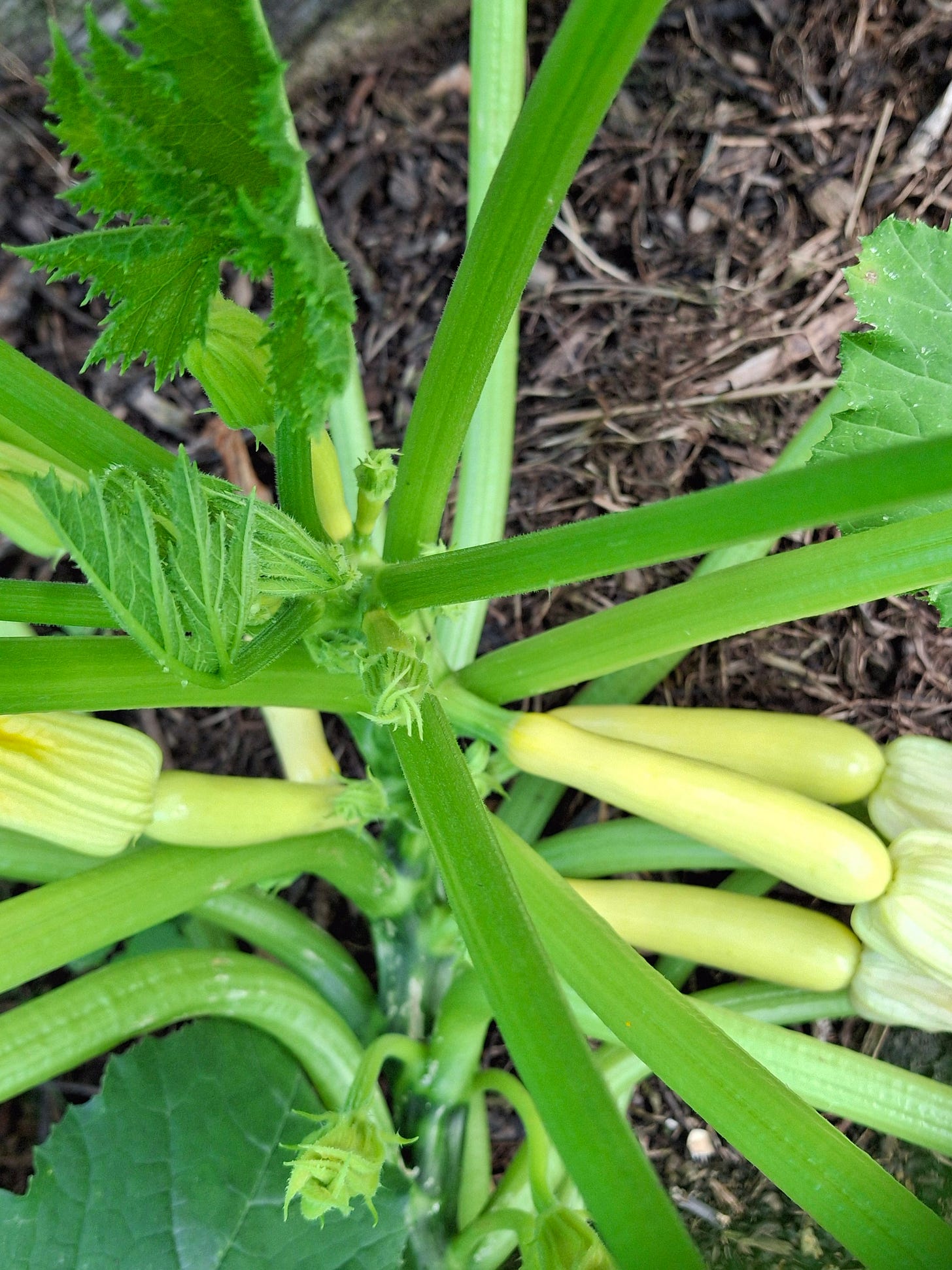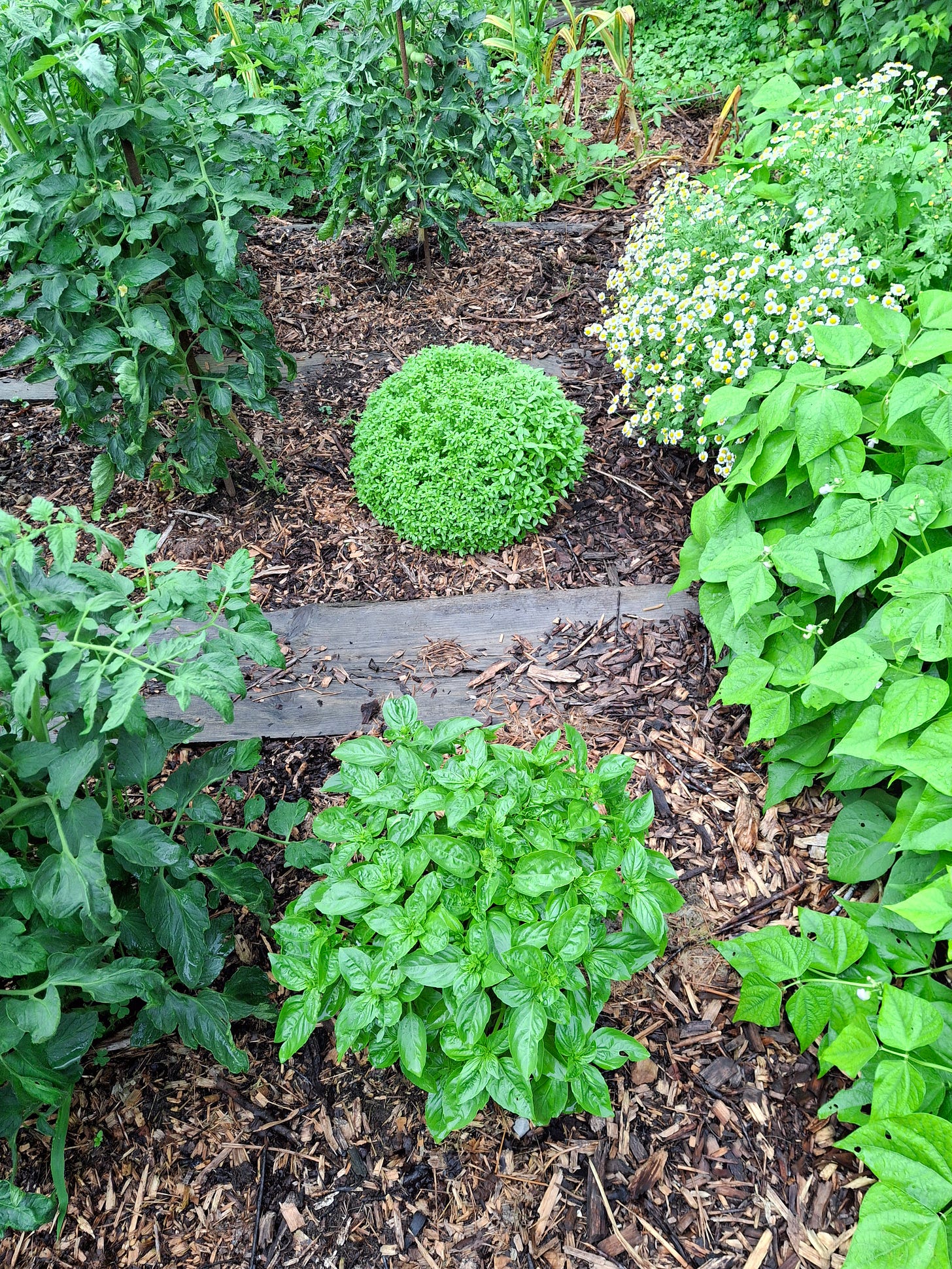Tomatoes practically grow themselves in southern Ohio
It is hot now, over 90 degrees with humidity to match. It is time to drink cold brew coffee and sit with our feet in the kiddie pool. It is time to avoid the garden until after 7 pm and spend as much time there as possible in the morning.
For me, it is not a time to be in a hot kitchen processing excess produce, although of course many gardeners are doing just that or will be soon. Canning, freezing, and dehydrating are all solutions gardeners turn to when preserving the summer glut of food for winter eating.
These methods work, but they are labor and energy intensive. Canning usually involves lots of chopping and heating using specialized equipment. Freezing is slightly less complicated, but most vegetables must be blanched to deactivate enzymes or they will taste terrible when they are thawed. Dehydrated food takes up little storage space, but uses large amounts of electricity as it dries. All these projects must be timed correctly, undertaken when produce is at its peak both in quality and quantity. You must be able to make time during the window of opportunity or risk missing it.
Volunteer pole bean uses volunteer chicory for support
These methods are often worth the effort because they spread the edible results of gardening throughout the year, but some of us simply don't have the time for preserving. When I began the garden 25 years ago, it became obvious to me that trying to do it all was not feasible. Taking care of small children, then eventually returning to paid work while homeschooling, meant I was constantly busy. I rarely use traditional preserving methods, but over the years I've found other ways to get the most out of my harvest that require less time.
The obvious way to to get maximum nutrition from the garden and orchard without preserving is seasonal eating, making full use what is available at any given time. Many people try to avoid food that is trucked in from far away to cut down on the energy footprint of their food, but even local food that has been preserved can hold a high level of embodied energy and I don't want it to be my energy. I save time and labor by eating food as it becomes available.
French horticultural beans are an old standby shelling bean
Daily harvesting and cooking are a large commitment in themselves, but the payoff is immediate. In the last few months we have eaten our way through the broccoli, cauliflower, and snap peas. These are cool weather vegetables that grow well through spring and then deteriorate when hot weather arrives, so they must be consumed as they become mature. I suffered a bit of palate fatigue with cauliflower, but nevertheless the harvest was entirely eaten.
Soon summer squash season will be upon us, with all its pressure to make use of the explosion of zucchini fecundity. This is made easier by picking the fruits before they grow longer than eight inches, and by planting in succession so there are never too many coming on at once. Cucumbers are the same as they can’t be left on the vine and must be eaten as they ripen, but they can be sown several times through the season.
‘Smooth Criminal’ yellow squash of nearly pickable size
Other vegetables such as carrots, onions, and potatoes can be left in the ground and picked as needed, since they obligingly grow to edible size then just hang out for a while with little deterioration. Individual eggplants and peppers also have a fairly large window of time in which they can be picked, tomatoes not so much. They begin rotting if left overlong, but luckily chickens love them and take care of the excess.
Seasonal eating makes sense, but I want to be able to enjoy the fruits of the garden in the off-season as well and so I’ve been on the lookout for vegetables that store well with little or no processing. Below is a non-exhaustive list of the ones that last with minimal work.
Winter squash — absolutely no work involved beyond brushing off dirt at harvest and bringing inside to store.
Garlic — very little processing beyond making sure it is properly dried, and trimming leaves and stems.
Berries — as far as I know know, all berries can simply be frozen with no prep. Enzyme activity doesn't cause them to deteriorate in the freezer.
Peppers, sweet and hot — one of the only vegetables I know of that does not require blanching before freezing. Remove seeds and chop according to preference, place in freezer bags.
These are my favorite crops to grow for saving because of the very low labor involved. Some gardeners have success with onions too, certain varieties of which reputedly keep well. I find it difficult to get them to dry properly in our wet climate, so I simply leave them in the ground as pick them as needed.
Globe and Genovese basil await pesto season
Another underutilized storage vegetable in my opinion is dried beans. Although removing them from their pods can be tedious, the task can be done a little at a time since they dry on the vine and are essentially already preserved when picked. They are ridiculously easy to grow, and the work of shelling them can be spread out over many weeks, so I include them in my inventory of veggies worth growing for winter keeping.
Inevitably there will be excess produce that simply cannot be eaten up before it spoils. Chickens as living garbage disposals help prevent food from going totally to waste, and composting as a last resort is better than landfilling. Donating extra produce to a food pantry is also a good option if one is nearby and will accept perishable food. Or simply give it away to neighbors. If you have neighbors who also raise food, you might be able to trade for produce you can't or don't like to grow or for excess eggs from nearby chicken keepers.
From my observations, the current trend in homesteading circles leans heavily toward canning, pickling, and dehydrating. These are good preservation methods for those with time and inclination, and also tasks that usually fall to women. The much sought after “simpler” life can quickly become dismayingly hectic for those trying to do it all. I'm advocating instead for doing what you can without killing yourself. With a little planning you can maximize the healthy calories obtained from the garden and still be able to enjoy the process. The best tomato is still warm from the sun when it is sliced, and if a few go to waste it's not the end of the world.









My garden and I are all the things you try to avoid. Your words made me wince, and then laugh at myself. But, it's what I do, and have done in ever increasing amounts, for the past 20+ years on the farm. My goal each year is to can/freeze/preserve enough to get us through until the harvest of the next season. Each year I try not to overdo anythig "just in case". Last year, I overdid canned green beans and tomato sauce. Oh well! Every year is different, and my garden has moved several times over the years, making annual predictions difficult.
I tried growing fried beans once, unsuccessfully, many years ago. You've inspired me to try them again.
By the way, corn is also a vegetable to freeze without blanching. I leave a layer of husk on, cut off both ends and vacuum seal them.
Love this Lynn